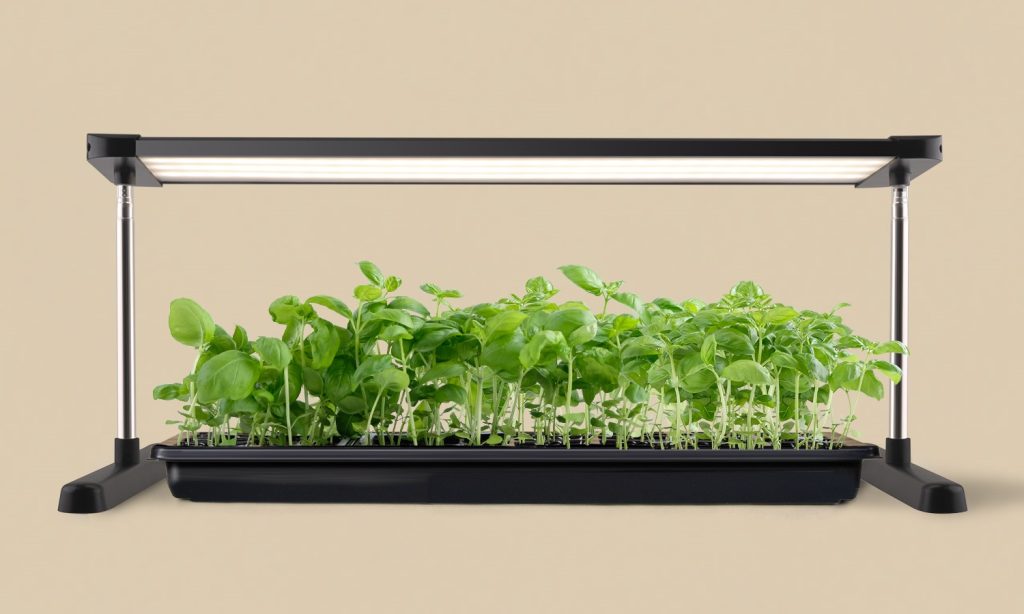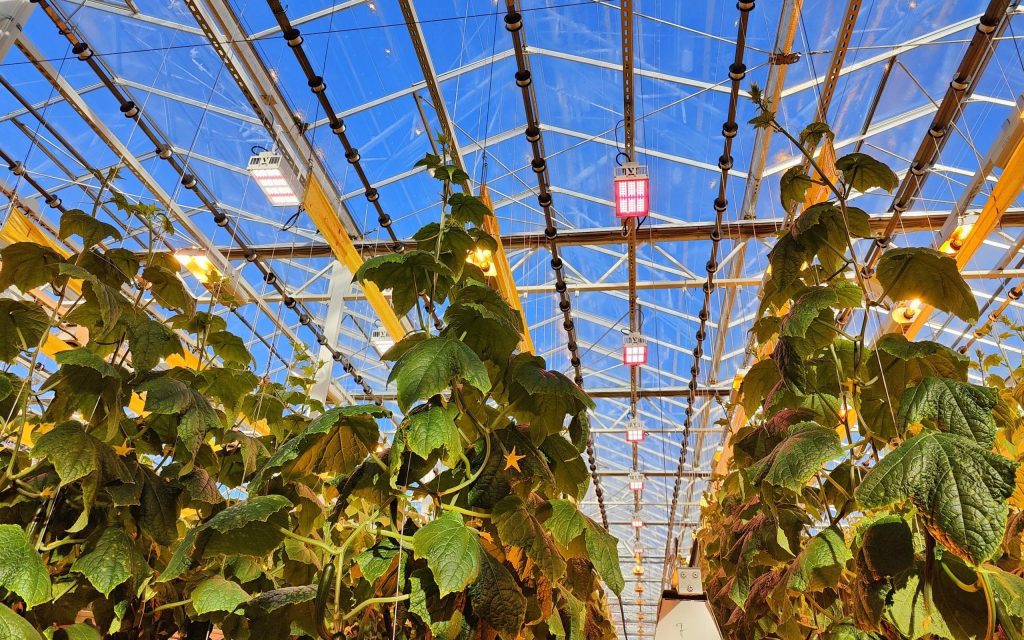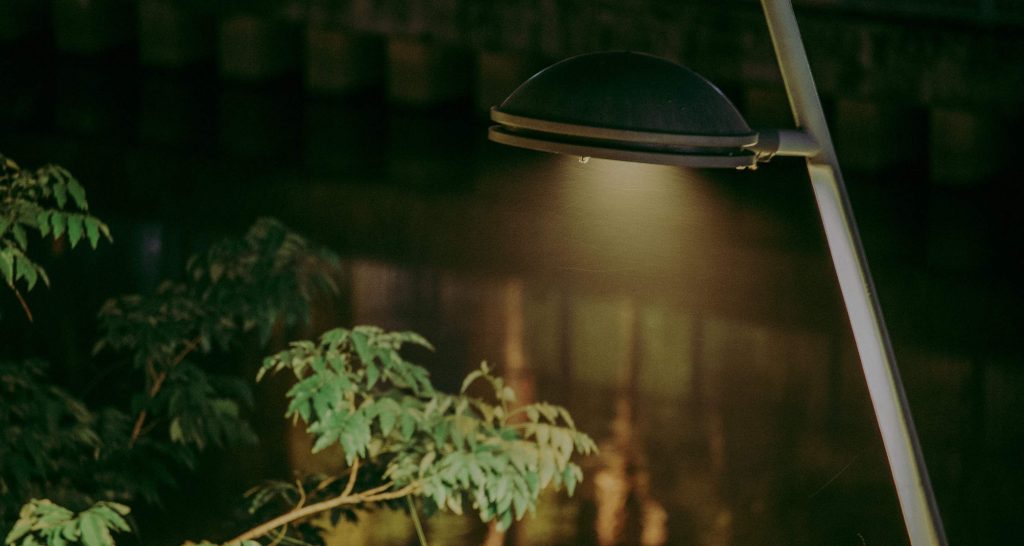Shining a Light on the Botanical Enigma: An Introduction to Grow Lights
The concept of grow lights is an interesting amalgamation of botany and technology, merging the natural requirement of plants for light with our ability to replicate and manipulate it artificially. Grow lights primarily serve as an alternative to sunlight in indoor environments or during seasons of low light availability.
They are specially designed lamps that emit light within the specific wavelength spectrum essential for photosynthesis, thus facilitating plant growth in conditions where sunlight is inadequate. Grow lights have evolved significantly over the years, from simple incandescent bulbs to intricate LED systems engineered to mimic different aspects of the solar spectrum.
The primary principle behind grow lights is their ability to generate specific types of light that plants can use effectively for photosynthesis – from germination through flowering and fruiting stages. Although artificial in nature, these lights essentially emulate the sun’s spectrum, providing plants with an optimal blend of blue and red light necessary for their growth.
From Sunbeams to Lumens: The Indispensable Role of Light in Plant Growth
When we discuss plant growth and development, one cannot overstress the importance of light. As fundamental drivers of photosynthesis – the process by which green plants convert carbon dioxide into oxygen and carbohydrates – light serves as a primary energy source for plants. Its significance extends beyond plant physiology; it influences various facets, including nutrient absorption capacities, defense mechanisms against pathogens, and even timing floral initiation.
The nature of this luminous energy plays a crucial role too; different wavelengths stimulate various responses within the plant community. For instance, red light stimulates foliage growth while blue light aids in chlorophyll production – both indispensable processes for robust development.

Moreover, understanding photoperiodism (the response of organisms to lengths of day or night) underscores how changes in light duration can instigate seasonal adaptations such as flowering or dormancy. Essentially, light is not merely the energy source for plants; it’s a signal that regulates their growth and development.
In essence, grow lights offer control over the light spectrum and duration, enabling consistent and optimized plant growth regardless of external conditions. For indoor cultivations or in geographic locations with limited sunlight, grow lights are an invaluable tool, extending the capacity to cultivate virtually any plant species year-round while maintaining optimal conditions.
Acknowledging the fundamental role of light in plant growth underscores why technological developments – like grow lights – have gained prominence. When we manipulate light spectrums effectively through these artificial sources, we can engineer ideal growing conditions irrespective of natural limitations imposed by weather or geography.
Unraveling the Spectrum: The Science of Light
Every gardener, be they novice or seasoned, should grasp the concept of the light spectrum to fully comprehend how plants utilize light. Essentially, the light spectrum refers to the different wavelengths of energy viewed collectively as white light.
It is a continuum or series of radiations that range from shorter wavelengths like gamma rays and X-rays to longer ones such as microwaves and radio waves. In this grand design, what concerns us most are visible light rays – the ones perceptible to human eyes – falling between 400 and 700 nanometers.
This visible part of the spectrum breaks down into seven main colors when refracted through a prism – red, orange, yellow, green, blue, indigo, and violet (collectively remembered by the acronym ROYGBIV). Each color corresponds to a particular wavelength. For instance, red has long waves around 700 nm, while violet possesses shorter waves near 400 nm. These varying lengths influence how plants absorb and utilize this light.
Echoes in Color: Understanding Plant Perception
When discussing plant growth in relation to artificial lighting systems such as grow lights or other household lights used for indoor gardening purposes, it’s crucial we consider how different colors in the light spectrum affect that growth. Red and blue lights are paramount for photosynthesis; they’re savored like gourmet meals by our green friends.
Blue light is primarily responsible for vegetative leaf growth due to its influence on chlorophyll production – a vital component for photosynthesis – and stomatal regulation, which controls water usage through transpiration. Conversely, red light prompts flowering and fruiting due to its role in influencing specific photoreceptors that regulate these biological processes.
Plants are less responsive to green or yellow wavelengths since their chlorophyll pigments absorb these less efficiently – this explains why most plants appear green as these wavelengths are mostly reflected rather than absorbed. However, they’re not entirely useless; research suggests they can penetrate deeper into the plant structure, aiding in photosynthesis in lower leaf layers.
The Invisible Spectrum: Far-Red and Beyond
Beyond the visible lights are wavelengths invisible to human eyes but impactful on plants. Far-red light (700-750 nm), perceived by specific plant photoreceptors, affects shade avoidance responses and stem elongation, playing a pivotal role in plant morphology.
The other end of the spectrum – ultraviolet (UV) light – is less beneficial for plants. Though it can stimulate protective responses like increased production of pigments that act as natural sunscreens, excessive exposure could lead to damage.
Understanding the light spectrum goes beyond a cursory knowledge of ROYGBIV – it delves into how each color or wavelength uniquely interacts and influences plant growth and development. Through this understanding, we can make informed choices about our indoor garden lighting systems.
Natural Sunlight vs Artificial Light: A Comparative Study
Comparison between Natural Sunlight and Artificial Light
Light forms the cornerstone of photosynthesis, the critical process through which plants generate food. The quality, duration, and intensity of lighting significantly influence a plant’s wellbeing. Natural sunlight has always been the ideal source of light for plants due to its optimal balance of spectral components suitable for photosynthesis.
It encompasses an extensive range from ultraviolet (UV) to far-red light, with each spectrum playing a crucial role in plant development. In contrast, artificial light is generated by human-made sources such as incandescent bulbs, fluorescent lamps, or LED lights.

Unlike sunlight, which radiates a full spectrum of light waves, artificial lights typically emit specific spectrums tailored to their purpose. The quality of artificial light can be controlled more precisely than natural sunlight; intensity can be adjusted, and lighting periods can be regulated without dependence on weather conditions or seasons.
However important to note is that not all artificial lights are created equal when it comes to providing the necessary spectrum for plant growth. While it is true that plants have adapted over millennia to harness the full breadth of sunlight’s spectral range efficiently, certain colors are critical for promoting specific phases of growth such as germination, vegetative growth, and flowering.
In essence, both natural sunlight and artificial light have their advantages and disadvantages in varying contexts. Sunlight remains unrivaled in its capacity to support plant life outdoors or through windows, but inside controlled environments like greenhouses or indoor garden setups where access to sunlight may be limited, carefully selected artificial lights can serve as effective substitutes.
The Role of Sunlight in Photosynthesis
Sunlight plays an indispensable role in photosynthesis, an essential biological process occurring in green plants that converts light energy, typically sourced from the sun, into chemical energy. This process is responsible for sustaining plant life and contributing significantly to Earth’s oxygen supply. The photosynthesis process begins when chlorophyll molecules in plant cells absorb photons from sunlight.
The energy derived from this light absorption powers the conversion of carbon dioxide and water into glucose – a form of sugar used as food by the plant – and oxygen, which is released into the environment. Interestingly, not all wavelengths or colors of sunlight are absorbed equally during photosynthesis.
The most effective wavelengths lie within the red (620-750 nm) and blue (450-495 nm) spectrums, known collectively as Photosynthetically Active Radiation (PAR). Chlorophyll absorbs these particular light waves more readily than others; hence, they are crucial to fueling photosynthesis.
While sunlight serves as nature’s blueprint for optimal plant growth lighting, modern technological advancements have made it possible to mimic its qualities using artificial means. However, understanding how sunlight participates in photosynthesis and consequently influences growth allows us to more effectively tailor artificial lighting systems to support plant health and productivity indoors or in controlled environments.
Can Any Light work as a Grow Light?
A Luminary Exploration: Household Lights and Their Growing Capabilities
Delving into the world of ordinary household lighting, three primary types of lights prevail: incandescent bulbs, fluorescent lamps, and light-emitting diode lights.
The incandescent bulb, a relic from the past century, was once ubiquitous in homes around the globe. However, these bulbs are grossly inefficient for plant growth. They emit a large portion of their energy as heat rather than light and predominantly release longer wavelengths that lean towards the red end of the spectrum. While this wavelength is beneficial for plants in their flowering stage, it falls short in providing a ample light source for overall plant growth.

Fluorescent lights come in two varieties: tube-shaped and compact (CFL). Tube-shaped fluorescent lights have been frequently used for indoor garden setups due to their relatively cool operation temperature and decent emission of blue and red light wavelengths. CFLs operate on similar principles but are more compact, making them suitable for small-scale indoor gardening efforts.
LED lights take energy efficiency to another level by emitting very little heat while providing both red and blue light wavelengths that plants crave. They are more expensive initially but offer longer life spans, which offset their initial cost over time.
Specific Grow Lights for Plants
A Bright Array: Specialized Lighting Devices Tailored for Plant Growth
High-Intensity Discharge (HID) Lights have been long-time favorites amongst serious indoor gardeners. These powerful luminaries yield high amounts of both the blue (metal halide) and red (high-pressure sodium) spectrums but generate significant heat, requiring proper ventilation systems.
Compact Fluorescent Lamps (CFL), an upgrade over regular fluorescent tubes or bulbs, offers higher output without increasing electricity consumption significantly. These are versatile options for beginner indoor gardeners.
Full Spectrum LED Grow Lights are the latest entrants in the arena of grow lights. They cover all light spectrums necessary for plant growth, closely mimicking natural sunlight. While they command a higher price point upfront, their energy efficiencies and lifespan make them a worthy long-term investment.
Factors to Consider When Choosing a Grow Light
When choosing a grow light, it’s crucial to consider factors such as intensity and quality of the light source. Light intensity affects photosynthesis rates, with too little light leading to weak plant growth, while excessive light can cause damage. The quality or spectral output of your chosen bulb should ideally align closely with that required by plants – blue for leafy growth and red for flowering.
The distance between plants and the light source is paramount since closer proximity leads to more intense illumination but increased heat exposure. Balancing distance requires keen observation of plant response and careful adjustments.
Duration, or timing, is another aspect that needs attention. A general rule-of-thumb is 14-18 hours of artificial light exposure for seedlings, which can be reduced to 12-16 hours once plants have matured.
A Case Study: Using Non-Specialized Light as a Grow Light
A Luminous Success Story: Household Bulbs Fostering Flourishing Foliage
In an experiment conducted by an avid indoor gardener on lettuce varieties over an eight-week period, standard fluorescent tube lights were used as opposed to specialized grow lights. The results astoundingly showcased healthy leaf development comparable to that under natural sunlight conditions. This demonstrates potential success in using non-specialized lighting solutions in indoor gardening scenarios given appropriate species selection coupled with optimal control over environmental parameters like humidity, temperature, nutrition supply, etc.
Conclusion: Can Any Light work as a Grow Light?
After thorough analysis, any light can indeed serve as a grow light, but some lighting devices are indisputably more efficient and effective than others. For the dedicated indoor botanist, an investment in specialized grow lights such as Full Spectrum LED Grow Lights, HIDs, or CFLs would be prudent. However, for a novice experimenting with indoor plant growth, household fluorescent lights can work sufficiently well with careful monitoring and adjustments.
You may also be interested in the following posts:
